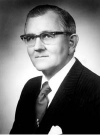Your shopping cart is empty!
MENU
- +
-
Shop
+
Hinger Private Collection Now Available

 A rare opportunity to own memorabilia and personal instruments collected and played by Fred D Hinger, famous percussionist/timpanist. This collection also includes unique instruments and protoypes developed for the Hinger Touch Tone Corporation.
A rare opportunity to own memorabilia and personal instruments collected and played by Fred D Hinger, famous percussionist/timpanist. This collection also includes unique instruments and protoypes developed for the Hinger Touch Tone Corporation. - About Us +
- The Drum Beat +
- Museum +
- Contact Us +
















